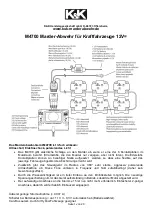
Tires
The correct cold tire pressures are:
(US: DX, L X , Canada: L X , EX)
220 kPa (2.2 kg/cm
2
, 32 psi)
(US: EX, Canada: EX-V)
200 kPa (2.0 kg/cm
2
, 29 psi)
Compact spare:
415 kPa (4.15 kg/cm
2
, 60 psi)
These pressures are also given on
the tire information label in the
glove box. Remember to check the
pressure in the spare tire at the
same time.
You should get your own tire
pressure gauge and use it at all
times. That makes it easier for you
to tell if a pressure loss is caused by
a tire problem and not a variation
between gauges.
Keeping the tires properly inflated
provides you with the best combi-
nation of riding comfort, handling
and tread life. Underinflated tires
wear unevenly, reduce you car's
handling, and are more likely to fail
because of higher temperatures.
Overinflated tires make your car
ride more harshly, are more prone
to damage from road hazards, and
wear unevenly.
Inspection
Every time you check inflation, you
should also examine the tires for
damage, foreign objects, and wear.
You should look for:
Bumps or bulges in the tread or
side of the tire. Replace the tire if
you find either of these condi-
tions.
Cuts, splits, or cracks in the side
of the tire. Replace the tire if you
can see fabric or cord.
Excessive tread wear.
CONTINUED
Maintenance
TIRE INFORMATION LABEL
Table of Contents
Main Menu
▲
▼
















































